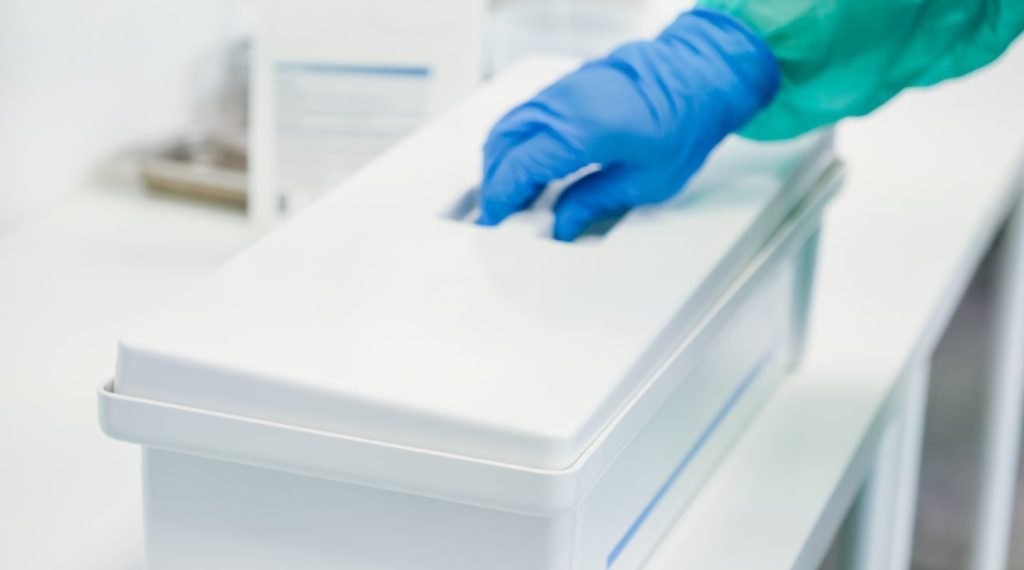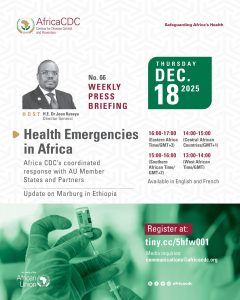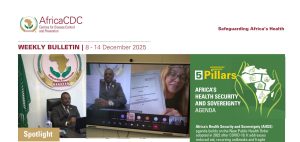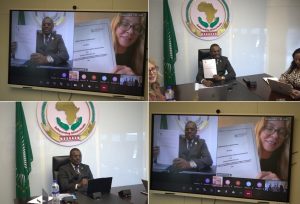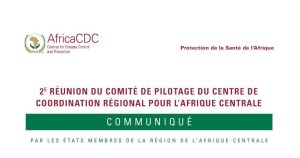The Africa Centres for Disease Control and Prevention (Africa CDC) has unveiled the Biosafety and Biosecurity Strategy 2026–2030, marking a new era in Africa’s pursuit of safe science, responsible innovation and resilient health security systems.
The new strategy builds on the strong foundation of the Africa CDC Biosafety and Biosecurity Initiative (BBI), launched in 2019 to strengthen the continent’s capacity to prevent, detect and respond to accidental, deliberate and naturally occurring biological threats. This second phase represents a shift from early coordination to deeper institutionalisation.
Officially validated in Durban, South Africa, during the 4th International Conference on Public Health in Africa, the Biosafety and Biosecurity Strategy 2026–2030 signals a decisive transition towards stronger governance, sustainability and African leadership.
“The new Biosafety and Biosecurity Strategy is a cornerstone of Africa CDC’s mandate to safeguard the continent’s health security. It embodies our collective commitment to strengthen national systems, empower African expertise, and ensure that science and innovation are practised safely and responsibly — building a resilient, self-reliant Africa prepared to prevent, detect and respond to biological threats of any kind,” said Dr Yenew Kebede, Acting Director of the Africa CDC Centre for Laboratory Systems and Diagnostics.
The strategy is organised around seven strategic pillars, grouped under enabling and operational domains. These focus on strengthening Africa CDC’s leadership and coordination capacity, enhancing multisectoral Regional and National Technical Working Groups, and promoting innovation and emerging technologies such as AI, synthetic biology and digital biosurveillance. Together, these enabling pillars aim to reinforce the systems that support safe scientific practice across the continent.
The operational pillars include harmonising and domesticating legal and regulatory frameworks, scaling up regulatory and certification systems for high-containment facilities, expanding professional training and certification to build a critical workforce, and strengthening National Public Health Institutes and National Reference Laboratories as national anchors of biosafety and biosecurity. These operational mechanisms translate strategy into action on the ground.
“Africa CDC will develop a funding framework to support Member States in moving from dependence on external funding to domestic resource mobilisation for the institutionalisation of biosafety and biosecurity,” the strategy notes.
The strategy emphasises domestic resource mobilisation, strong country ownership, structured career pathways for biosafety and biosecurity professionals, and responsible innovation under a One Health framework. By 2030, Africa aims for at least 60% of biosafety and biosecurity activities to be financed through domestic and regional sources, securing the long-term sustainability of its health security systems. This investment shift is key to ensuring Africa leads its own biosafety future.
The new plan builds on the success of the 2021–2025 first phase, which significantly advanced Africa’s biosafety and biosecurity landscape. Strong partnerships, including support from Global Affairs Canada, the UK Government (SIMBA Initiative), the U.S. CDC, the Defence Threat Reduction Agency, the Coalition for Epidemic Preparedness Innovations, the Nuclear Threat Initiative Bio, the World Bank and the African Society for Laboratory Medicine (ASLM), yielded several key milestones. Five Regional Biosafety and Biosecurity Technical Working Groups (RBB-TWGs) were operationalised, and the regional Biosafety and Biosecurity Legal Framework was endorsed by the African Union.
More than 400 professionals were certified through the Regional Training and Certification Programme. The High-Containment Laboratory Certification Framework was piloted in nine countries. Biosafety and biosecurity were integrated into national health security plans in over 20 Member States, and coordination and knowledge exchange across the continent improved. These achievements created the momentum and institutional readiness required for the next phase.
“These achievements underscore Africa’s growing capacity to shape its own biosafety and biosecurity future,” said Dr Kebede. “The lessons from Phase 1 have positioned us to move from fragmented efforts to a structured, sustainable and African-led framework that protects the continent against biological risks of all forms.”
To ensure that the new strategy reflects the realities and priorities of Member States, Africa CDC convened regional consultations across all five AU regions — Eastern, Central, Northern, Southern and Western Africa — in June 2025. These consultative meetings brought together Member States, Regional Coordinating Centres, National Public Health Institutes, Technical Working Groups and partners such as WHO, WOAH and WAHO. This continental consultation process grounded the strategy in the lived experience of Member States.
“The consultative approach reaffirmed that biosafety and biosecurity are not just technical concerns, they are political, developmental and public health imperatives,” said Sibusiso Masuku, Senior Biosafety and Biosecurity Officer at Africa CDC. “The voices of Member States shaped the strategy, ensuring it is both locally grounded and regionally harmonised.”
“As we enter this new phase, our focus is on sustainability and African leadership,” said Dr Talkmore Maruta, Director of Programmes at ASLM. “The 2026–2030 Strategy recognises that Africa’s safety must be built on Africa’s expertise, Africa’s institutions and Africa’s commitment.”
“This strategy is a testament to what can be achieved through shared vision and partnership. ASLM remains committed to supporting Africa CDC and Member States in strengthening laboratory systems that are not only efficient, but also safe and secure,” added Mr Nqobile Ndlovu, CEO of ASLM.
The 2026–2030 Strategy represents a bold step towards reducing vulnerability to biological threats and positioning Africa as a global contributor to biosafety and biosecurity governance. It builds on Africa CDC’s mandate to coordinate, support and empower Member States in protecting laboratory workers, communities and ecosystems. It also marks a shift from project-based interventions to long-term, system-wide safety.
“Our collective resilience depends on how well we protect those working at the frontlines of science and public health. This strategy ensures that laboratories are safer, innovations are responsibly managed, and future generations inherit a continent better prepared to detect and respond to biological threats,” said Donewell Bangure, Senior Epidemiologist at Africa CDC, emphasising the importance of sustained collaboration.
With strengthened coordination, investment in people and institutions, and a unified continental roadmap, Africa CDC continues to advance towards a future where laboratory systems are safer, outbreaks are detected earlier, and science is practised securely and responsibly.

